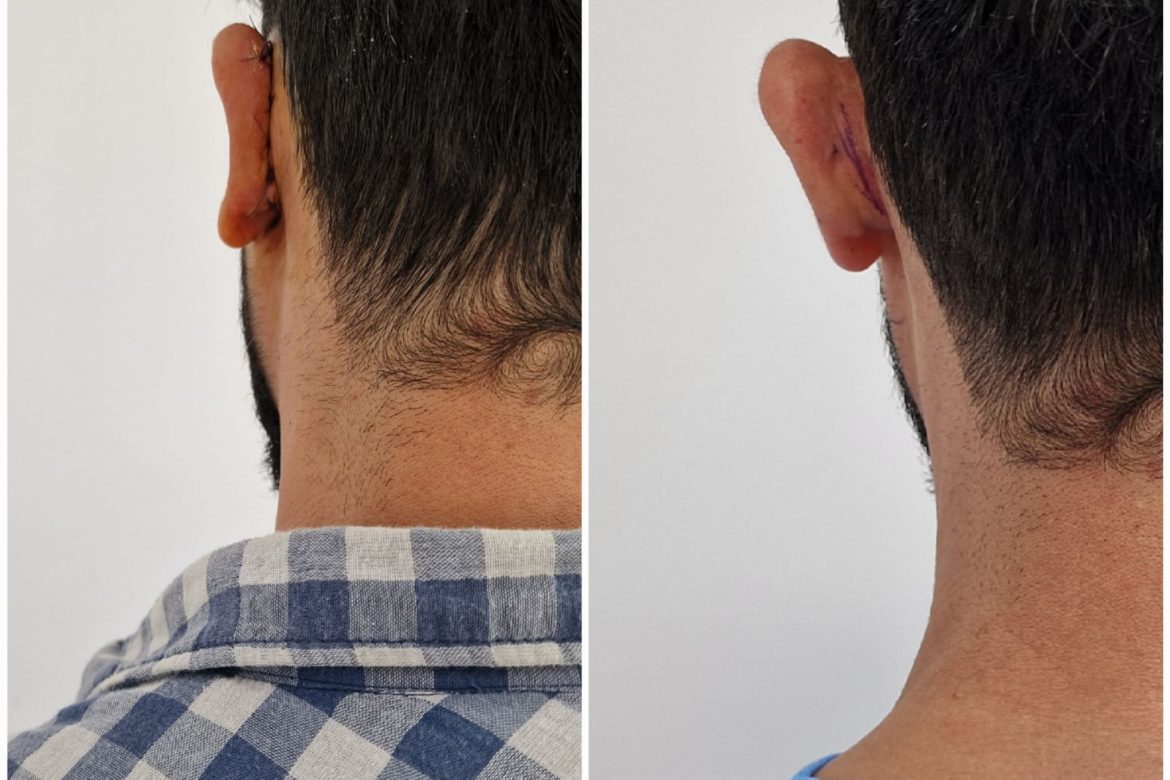Otoplasty, also known as ear surgery, is a cosmetic procedure designed to improve the appearance of the ears. This surgery can correct a variety of ear issues, such as protruding ears, asymmetry, or deformities, resulting in a more balanced and natural look. Dr. Talih EL Ahmadie is an expert in performing otoplasty, providing personalized care to enhance the aesthetics and function of the ears.
Who is a Good Candidate for Otoplasty?
Good candidates for otoplasty include:
- Children: Typically, children as young as five or six years old can undergo otoplasty, as their ears have reached near-full size by this age. Early correction can prevent teasing and improve self-esteem.
- Adults: Individuals of any age who are self-conscious about the appearance of their ears can benefit from this procedure.
- Health: Candidates should be in good overall health and have realistic expectations about the outcome of the surgery.
Types of Otoplasty
- Ear Pinning (Setback Otoplasty):
- This procedure addresses protruding ears by repositioning them closer to the head. It involves reshaping or removing cartilage to achieve the desired position.
- Ear Reduction:
- This surgery reduces the size of large ears (macrotia) by removing excess skin and cartilage.
- Ear Reshaping:
- This technique corrects various deformities or asymmetries in the ear’s shape, such as lop ear, shell ear, or cupped ear.
- Reconstructive Otoplasty:
- Reconstructive procedures are used to repair congenital deformities, injuries, or deformities caused by previous surgeries or trauma.
The Otoplasty Procedure
- Consultation:
- During your consultation, Dr. Talih EL Ahmadie will discuss your medical history, aesthetic goals, and any concerns you have about your ears. He will perform a physical examination and recommend the most appropriate treatment plan.
- Anesthesia:
- Otoplasty is typically performed under local anesthesia with sedation or general anesthesia, depending on the patient’s age and the complexity of the procedure.
- Incisions:
- Incisions are usually made behind the ear or within the natural folds of the ear, minimizing visible scarring.
- Cartilage Reshaping:
- Dr. Talih EL Ahmadie will reshape, remove, or reposition the ear cartilage to achieve the desired appearance. Stitches may be used to hold the new shape and position of the ear.
- Closing Incisions:
- Incisions are closed with sutures, and the ears are bandaged to protect the surgical site and support the new shape.
Recovery and Results
- Initial Recovery:
- Patients can expect some swelling, bruising, and discomfort around the ears for the first few days. Pain can be managed with prescribed medications.
- Bandages:
- A headband or bandages may be worn to support the ears and maintain their new position.
- Activity:
- Most patients can return to work, school, or normal activities within a week, but strenuous activities and contact sports should be avoided for several weeks.
- Final Results:
- The final results of otoplasty are typically visible once the swelling subsides, revealing a more balanced and natural ear appearance.
Risks and Considerations
As with any surgical procedure, otoplasty carries some risks, including:
- Infection
- Bleeding
- Scarring
- Changes in skin sensation
- Asymmetry
- Need for revision surgery
Dr. Talih EL Ahmadie takes every precaution to minimize these risks and ensure a safe and successful outcome.
Personalized Care
Dr. Talih EL Ahmadie is dedicated to providing personalized and compassionate care throughout your otoplasty journey. From the initial consultation to post-operative follow-up, our goal is to ensure you feel informed, comfortable, and supported every step of the way


